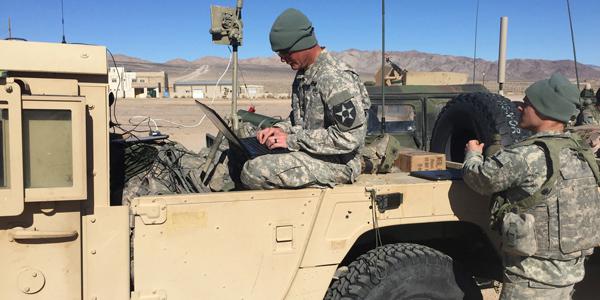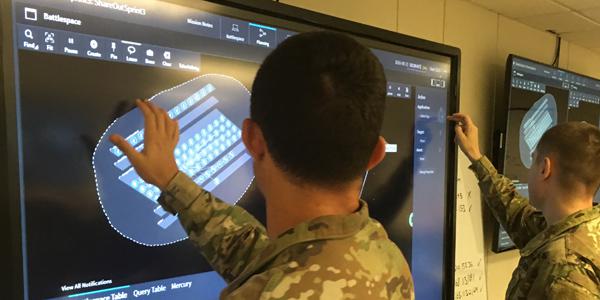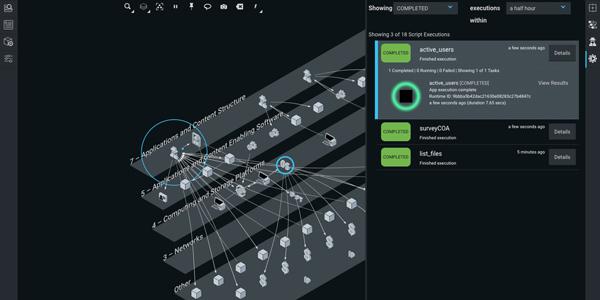Beyond Plan B: Army Embraces Broad Cyber Program
The Defense Department's research arm skipped from Plan B for cyber defense solutions to Plan X, advancing platforms to conduct cyber warfare like kinetic warfare.
Zipping past a Plan B for cyber defense solutions to the end of the alphabet, the U.S. Defense Department's research arm launched Plan X and advanced platforms to conduct and assess cyber warfare like kinetic warfare.
After five years of development by the Defense Advanced Research Projects Agency (DARPA), Plan X is scheduled to transition in September to the Army's Program Executive Office for Enterprise Information Systems (PEO EIS) Project Manager Installation Information Infrastructure–Communications and Capabilities (I3C2).
“The move, which will take the system from the realm of prototypes to an official program, is being looked at by acquisition officials such as the assistant secretary of the Army for acquisition, logistics and technology and the Army Rapid Capabilities Office as a potential model for emerging technologies, a new way to more rapidly get needed systems into the hands of users and into battle,” says Frank Pound, Plan X program manager.
Plan X is designed to provide troops with a much-needed common operating picture in cyber, similar to the ones they receive for traditional operational missions. For example, the technology will display the status of weapons systems, provide situational awareness of friendly and enemy cyber activity, and facilitate collaboration between commanders, Pound says. With Plan X, commanders get a comprehensive view of the cyber terrain.
It will streamline and facilitate missions in the contested multidomain battlespace that now includes land, air, sea, space and cyber.
Since kicking off the program in 2012, DARPA has worked with the Army Cyber Protection Brigade, Army Cyber Command, the assistant secretary of the Army for acquisition, logistics and technology and multiple program executive offices, Army officials say. “But unlike the existing tools in the Cyber Protection Brigade arsenal, which are used mainly for specific functions such as surveying and securing, Plan X lays an integrated foundation for executing, collaborating, planning and managing a wide range of operational cyber activities,” reads an Army statement about the program. “It also integrates cyber into the fighting mindset by making it easier for soldiers to visualize networks as key terrain they are charged to protect.”
The program bridges cyber communities in academia, the defense industrial base and commercial tech industry, Pound says. “Cyberspace is now recognized as a critical domain of operations by the U.S. military and its protection is a national security issue,” he says.
The program is defense-focused rather than tasked with developing cyber-offensive technologies or effects. “Plan X gives commanders a way to see and respond to key cyber terrain in the same way they react to actions on the physical battlefield and enables synchronizing cyber effects with key related warfighting functions such as intelligence, signal, information operations and electronic warfare,” Pound says.
The program has piqued the interest of officials in the Army’s Rapid Capabilities Office to serve as a model for quickly prototyping and transitioning emerging technologies.








Comment
Cyberspace
The domain, the "thing" is cyberspace. JP 3-12 dictates "defensive cyberspace operations". Doctrinally speaking, we fight in the cyberspace domain. "Cyber" is an adjective "of, relating to, or characteristic of the culture of computers, information technology, and virtual reality". While things like "Cyber Protection Brigades" are technically correct (albeit a poor choice), a "common operating picture in cyber" is not.
Similarly you reference "It will streamline and facilitate missions in the contested multidomain battlespace that now includes land, air, sea, space and cyber." As stated above, this should be "cyberspace".
I would also point out that Mr. Pound incorrectly categorized the terrain in cyberspace as "key cyber terrain". He's referring to the virtual environment in which cyberspace operators conduct ops - no a characteristic of the terrain itself.
While I realize it's seems trivial, we have doctrine for a reason - so that we can all speak the same language and have common ground on which to operate.
Comments